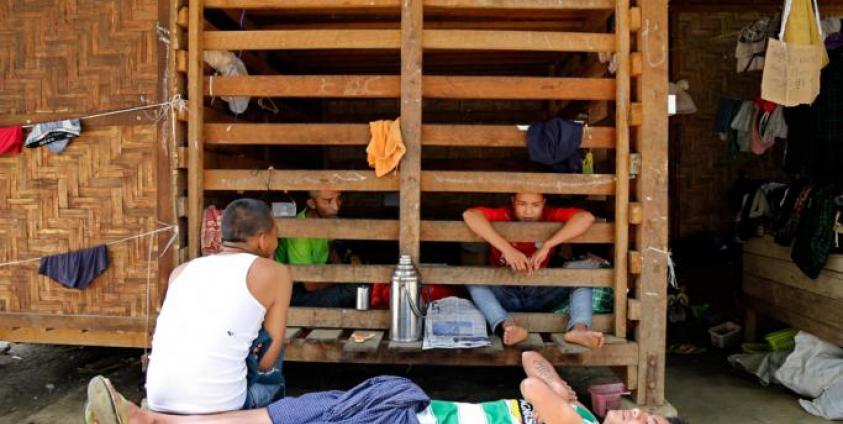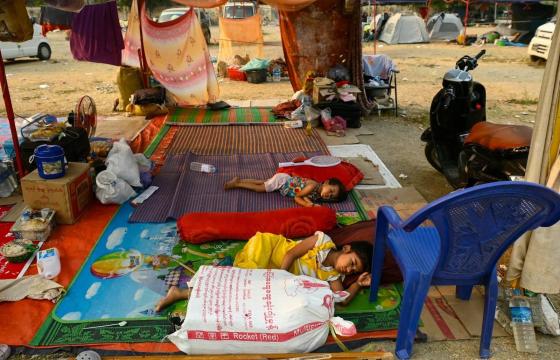Part 3
The various ways in which the armed conflict and illegal drug production intertwine are not new. They have evolved alongside political alliances between the central government and ethnic armed groups, and with market shifts in drug production. Key to changing patterns in drug production over the last several years, however, has been the end of a period of relative stability that northern Shan State experienced between the early 1990s and 2011 and the tactics the Tatmadaw have used to quell violence.
The conflict in northern Shan includes armed groups with very different historical involvement with, and stated policies on, illegal drugs. Even within the northern alliance, there are groups such as the MNDAA that were notorious for their involvement in drug production and trafficking prior to their defeat and expulsion from the Kokang region in 2009; the Arakan Army, which is alleged to fund its operations in part through yaba trafficking; and the TNLA, which has an avowedly anti-drug policy.
The TNLA’s recent history demonstrates that involvement in the drug trade is never clear-cut for groups in Shan State. The TNLA is the latest incarnation of ethnic Ta-ang (Palaung) armed resistance. The Tatmadaw forcibly disarmed and disbanded an earlier group, the Palaung State Liberation Army, in 2005. Locals claim that because this group had restricted drug trafficking in its area, its disbandment led to a dramatic rise in drug production and consumption in Ta-ang areas of northern Shan (in particular, Kutkai, Namkhan and Manton), which had negative impacts on rural Ta-ang society.
The TNLA formed against this backdrop in 2009 and declared that, along with fighting the Tatmadaw, it would also combat the scourge of illegal drugs. This stance, and the group’s high-profile destruction of opium poppy fields, immediately put it on a collision course with militias involved in the heroin business that were protecting those fields, in particular the Pansay militia. Sporadic clashes have occurred between the two groups, most commonly around the opium harvesting period. At times, the Pansay militia has called on the Tatmadaw for support, including heavy artillery and air power, in its battles with the TNLA. This is one direct way in which the drug trade and the armed conflict between ethnic groups are linked.
Other links are indirect. Even as the TNLA pursues its anti-drug activities, it needs to raise the significant funds necessary for maintaining its insurgency. This it does at least in part through “revolutionary taxation” – in particular, extorting commercial vehicles plying the Lashio-Muse trade route, which must pay half-yearly fees to the group, and forcing Ta-ang businesses and shops to pay protection money. On occasion, the TNLA and its allies have even mounted attacks on the 105 Mile border trade zone in Muse, as they did in November 2016, shutting down much of Myanmar’s trade with China for several days – in part aimed at opening another front at a time of Tatmadaw operations in other areas, and also imposing a financial cost on Myanmar.
Yet with so much of the northern Shan economy revolving around drugs, it is virtually impossible to avoid money related to the drug trade. Precursor smuggling and drug trafficking provide some of the most lucrative opportunities for the TNLA’s taxation, with higher tax rates reportedly being levied for these activities, and seized drugs reportedly often sold by the TNLA back into the supply chain (other revenues come from the thriving illegal logging trade, extractive industries, and human trafficking). There are no indications that the TNLA has used any of its income to help promote alternative livelihoods for Ta-ang opium farmers.
Thus, there are direct links between conflict and drugs, specifically around occasional eradication efforts and clashes between actors in the drug trade. The illicit economy allows these armed groups to generate revenue from taxation or extortion, helping to fund and sustain Myanmar’s seventy-year-old civil war.
The immense profitability of the drug trade attracts transnational criminal organisations and promotes corruption that deepens the grievances of ethnic minority communities that underpin the civil war. That civil war in turn provides a justification for the Tatmadaw’s militia strategy, creating the conditions for a corrosive political economy dominated by armed actors operating with impunity.
What’s the solution?
According to the ICG, the Myanmar government should redouble its drug control and anti-corruption efforts, focusing on major players in the drug trade. Education and harm reduction should replace criminal penalties for low level offenders. The military should reform – and ultimately disband – militias and other pro-government paramilitary forces and pursue a comprehensive peace settlement for the state.
Part 1 and Part 2 can be found here








